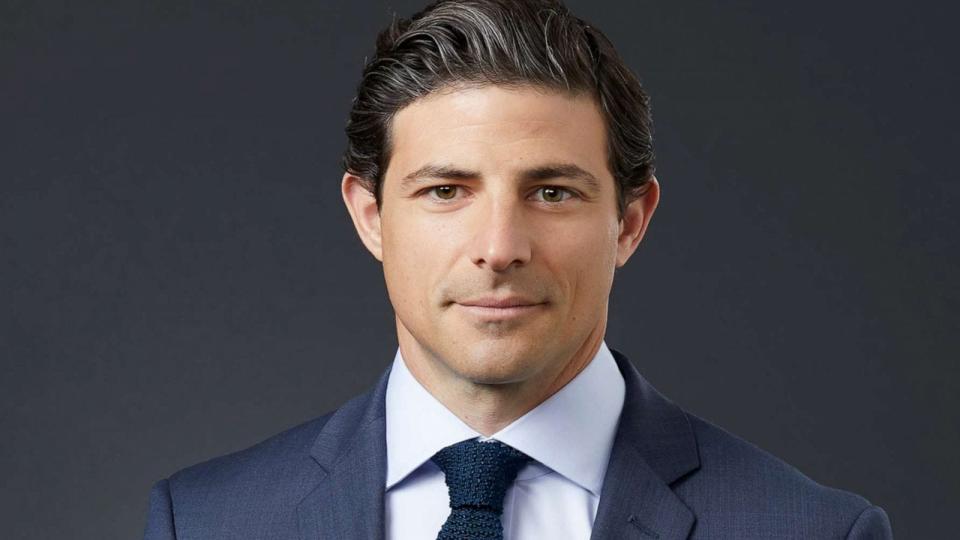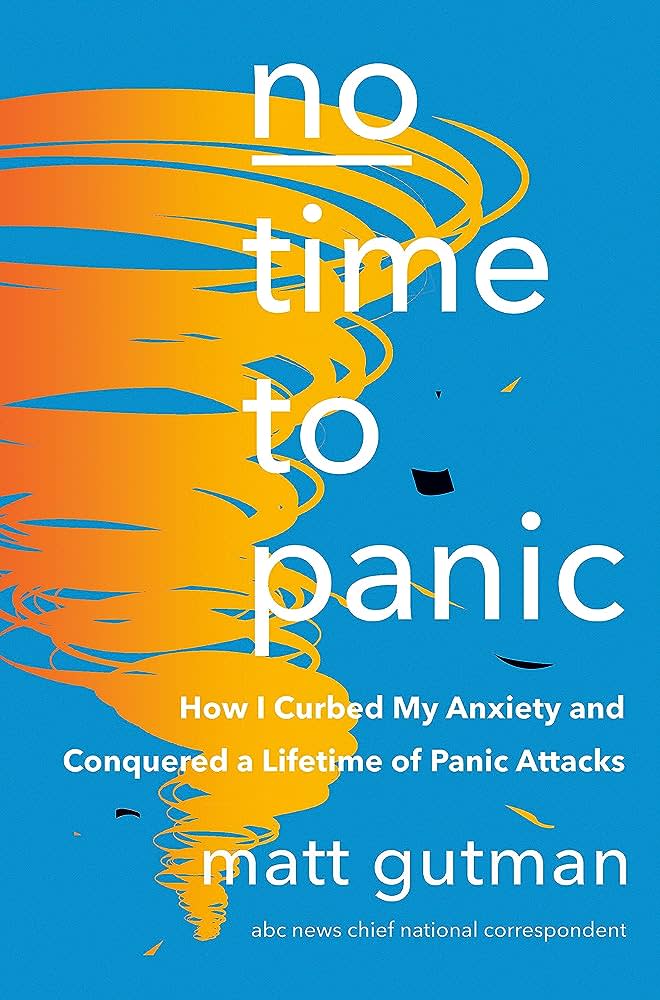Veteran TV reporter's book details lifetime of panic attacks — including on camera
- Oops!Something went wrong.Please try again later.
If you have a fear of public speaking, take heart — you’re not alone.
Up to 75% of the population is estimated to share the condition officially known as glossophobia.
And the anxiety associated with public speaking would only be exacerbated for those who have suffered panic attacks throughout their lives.
So making one’s living being an on-camera reporter would not seem like the most prudent career path.

But that’s just what ABC News Chief National Correspondent Matt Gutman ― who's currently on the ground covering the Israeli-Hamas war zone ― has been doing his entire adult life as he details in his just-released book “No Time to Panic: How I Curbed My Anxiety and Conquered a Lifetime of Panic Attacks.”
Earlier this month, the 45-year-old reporter, who has been with ABC News since 2008, told "Inside Edition" that he’d suffered hundreds of on-air panic attacks over the years.
“Many of those times I hemmed, hawed, choked and physically I couldn’t remember how to swallow. I call it the paradox of the courageous coward,” he explained. “How is it possible for someone to go in front of war zones, swim with sharks and yet be scared of standing in front of a camera and say what he’s supposed to say,” he explained.
More personal stories: Palm Beach County teacher finds her voice and helps students find theirs
TV career hit a bottom with 'horrific' on-air mistake
Though he’d suffered in silence for decades, Gutman traces the precise moment when he decided he couldn’t handle it anymore to the lowest point in his professional life: while reporting on the January 2020 helicopter crash that killed Kobe Bryant, Bryant’s 13-year-old daughter Gianna, and seven others on board.
While suffering a panic attack during his live shot, he misstated the facts — reporting that all four of Bryant’s daughters were aboard the aircraft when it crashed.
The circumstances of the story brought to the surface for Gutman pain he’d long been repressing.
As he told Chicago affiliate ABC-7 "Eyewitness News" while promoting the book, “This one was a little different. There was other stuff going on in my brain at the time. It just so happened that Kobe was basically the same age as my father when he died in a plane crash. And I was the same age as Gianna," he said. "I've been so good my whole career at compartmentalizing and keeping the painful stuff away. And I guess I failed and made a horrific mistake live on TV. And I regret it. And I ended up being suspended for a month."

A real-life reckoning with panic disorder
Once he admitted the truth to himself, Gutman took stock of where he was in life.
“In the nearly two decades of working for ABC News, I’ve cultivated the image of a reporter who emerges from the wreckage of a disaster with the story, and casually flicks off the dust,” he writes. “That public person of jovial fearlessness has obscured a secret, 20-plus-year battle with panic disorder. The irony is, when inserted into real-world chaos and peril, I soar. When expected to perform in the calm of a live shot, I crash. A TV reporter whose biggest fear is presenting a live report is like a free solo climber afraid of heights. So I obsessively covered up my Achilles heel from friends and colleagues.”
An estimated 85 million Americans — more than 28% of the nation’s populace — will suffer a panic attack in their lifetimes.
So Gutman’s first move was to look for panic-attack support groups — but he found they didn’t really exist.
And that’s when he began putting his reportorial skills to use, copiously researching the topic and speaking with experts.
“It took me years to recognize that what I had long dismissed as ‘just nerves’ were in fact symptoms of a panic disorder,” he writes. “It was only in recent years that I began addressing the problem in earnest with a new psychiatrist — even as I remained oblivious to the full extent of the shadow that panic cast over me. We tried everything from antidepressants to ADHD medications, from benzos like Xanax to antiseizure medication. I regularly practiced mindfulness and meditation. I ate well and exercised.”
However, Gutman found that the more he tried traditional medical approaches that provided less-than-fully satisfying results, the more curious he became about alternative methods.
So he availed himself of less conventional treatment protocols — some of which included ketamine-assisted therapy, holotropic breathwork, reiki, and supervised ingestion of psychedelics and toad venom.
He explains his reasoning for searching alternative treatments by writing that “since modern science and conventional therapy seemed unable to provide a cure, I gravitated toward the more unconventional. I became a human laboratory experiment.”
In writing about his search for healing, Gutman stresses that his journey “was neither planned out in advance nor scientifically conducted. My path was not direct, and it was definitely not replicable.”
But what he really hopes his fellow panic-attack sufferers will take from his book is that “panic is not easy to conquer or even manage. It can sometimes feel like a medieval punishment. But it doesn’t have to be a life sentence.”
This article originally appeared on Palm Beach Post: Gutman's book details TV reporter's quest to conquer panic attacks

